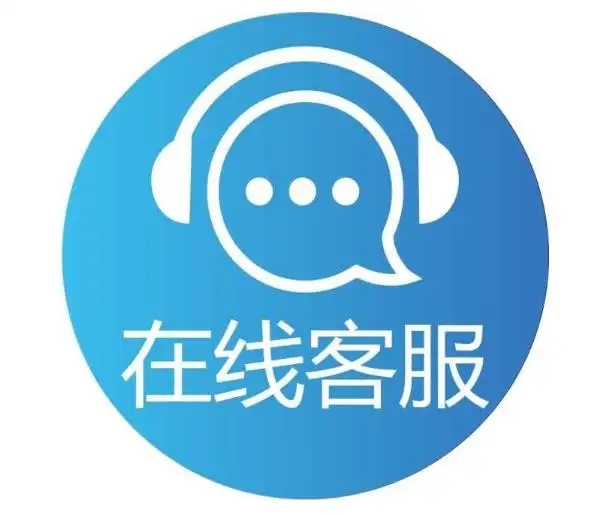No.9 - 时序数据库随笔 - Apache IoTDB 多条时序数据联合分析
本篇我们一起来看看Apache IoTDB如何解决要解决No8提到的网友问题,如下:

简单说就是如何处理两条时间线的数值计算?上面例子是一个 “+” 加法。
02 数据准备要处理多条时序数据分析问题,我们首先先建立两条时间序列,我们做一下数据准备:
启动IoTDB服务实例我们首先源码编译Master最新代码(),并启动服务实例。如下
iotdb git:(master) mvn clean install -DskipTests
...
...
[INFO] -------------------------------------------
[INFO] BUILD SUCCESS
[INFO] -------------------------------------------
[INFO] Total time: 02:41 min
[INFO] Finished at: 2021-04-07T07:13:32+08:00
[INFO] -------------------------------------------
➜ iotdb git:(master) cd distribution/target/apache-iotdb-0.12.0-SNAPSHOT-server-bin/apache-iotdb-0.12.0-SNAPSHOT-server-bin/
➜ apache-iotdb-0.12.0-SNAPSHOT-server-bin git:(master) sbin/start-server.sh
---------------------
Starting IoTDB
...
...
2021-04-07 07:33:50,636 [main] INFO o.a.i.db.service.IoTDB:93 - IoTDB has started. 启动Cli➜ iotdb git:(master) cd distribution/target/apache-iotdb-0.12.0-SNAPSHOT-server-bin/apache-iotdb-0.12.0-SNAPSHOT-server-bin/
➜ apache-iotdb-0.12.0-SNAPSHOT-server-bin git:(master) sbin/start-cli.sh -h 127.0.0.1 -p 6667 -u root -pw root

创建时间线IoTDB> create timeseries root.lemming.device1.m1 with datatype=FLOAT,encoding=RLE
IoTDB> create timeseries root.lemming.device1.m2 with datatype=FLOAT,encoding=RLE
...
IoTDB> show timeseries;
插入时间序列数据IoTDB> insert into root.lemming.device1(timestamp,m1, m2) values(1,3333,4444)
IoTDB> select * from root.lemming.device1;
看到这里,不知道大家是否发现,IoTDB虽然在存储层面是按时间序列进行列存储的,但是在API层面已经为大家抽象好来二维表结构,大家可以把多个时间序列当成一张二维度表的不同列,这个抽象大家就免去来入在InfluxDB中利用PIVOT进行行转列的需求,这样就更方便理解和对多时序数据的进行查询分析。好,那么下面我们看看如果实现 m1 + m2 这个需求。
03 代码数据准备我们一个一个敲命令不如咱直接写个Java代码实例,方便反复测试,测试本篇内容,我们只需要依赖iotdb-jdbc模块,pom如下:
org.apache.iotdb
iotdb-jdbc
${iotdb.version}
</dependencies>创建存储组,时间序列和准备数据的测试代码如下:
public class No9JDBCExample {
/**
* 第一次运行 init(),如果一切顺利,正面环境和数据准备完成
*/
public static void main(String[] args) throws Exception {
Class.forName("org.apache.iotdb.jdbc.IoTDBDriver");
try (Connection connection =
DriverManager.getConnection("jdbc:iotdb://127.0.0.1:6667/", "root", "root");
Statement statement = connection.createStatement()) {
init(statement);
} catch (IoTDBSQLException e) {
e.printStackTrace();
}
}
public static void init(Statement statement) throws Exception {
setStorageGroup(statement);
statement.execute(
"CREATE TIMESERIES root.lemming.device1.m1 with datatype=FLOAT,encoding=RLE");
statement.execute(
"CREATE TIMESERIES root.lemming.device1.m2 with datatype=FLOAT,encoding=RLE");
statement.execute("INSERT INTO root.lemming.device1(timestamp,m1, m2) VALUES (1,3333,4444)");
ResultSet resultSet = statement.executeQuery("SELECT timestamp, m1 as m1, m2 as m2 FROM root.lemming.device1");
outputResult(resultSet);
}
public static void setStorageGroup(Statement statement) throws Exception{
try {
statement.execute("SET STORAGE GROUP TO root.lemming");
}catch (Exception e){
statement.execute("DELETE STORAGE GROUP root.lemming");
statement.execute("SET STORAGE GROUP TO root.lemming");
}
}
private static void outputResult(ResultSet resultSet) throws SQLException {
if (resultSet != null) {
System.out.println("--------------------------");
final ResultSetMetaData metaData = resultSet.getMetaData();
final int columnCount = metaData.getColumnCount();
for (int i = 0; i < columnCount; i++) {
System.out.print(metaData.getColumnLabel(i + 1) + " ");
}
System.out.println();
while (resultSet.next()) {
for (int i = 1; ; i++) {
System.out.print(resultSet.getString(i));
if (i < columnCount) {
System.out.print(", ");
} else {
System.out.println();
break;
}
}
}
System.out.println("--------------------------\n");
}
}
}如果你运行得到如下结果,正面一切准备工作就绪:

我们接下来看看Apache IoTDB如何解决加法问题,目前IoTDB提供来自定义UDF的方式解决用户自定义的操作。如果要使用UDF我们需要增加依赖如下:
org.apache.iotdb
iotdb-server
0.12.0-SNAPSHOT
provided
</dependency>完整配置查阅:https://github.com/sunjincheng121/know_how_know_why/blob/master/khkw_iotdb/No9udf/pom.xml
添加依赖之后,我们可以实现如下UDTF(User Defined Timeseries Generating Function), 这里写一下全称,不然大家会以为是User defined Table Function。当然不可否则,UDF的接口我们还可以有改进的空间,我们就目前现状与大家简单说明,如下:
public interface UDTF extends UDF {
/**
* This method is mainly used to customize UDTF. In this method, the user can do the following
* things:
*
*
*
Use UDFParameters to get the time series paths and parse key-value pair attributes* entered by the user.
*
Set the strategy to access the original data and set the output data type in* UDTFConfigurations.
*
Create resources, such as establishing external connections, opening files, etc.*
*
*
This method is called after the UDTF is instantiated and before the beginning of the
* transformation process.
*
* @param parameters used to parse the input parameters entered by the user
* @param configurations used to set the required properties in the UDTF
* @throws Exception the user can throw errors if necessary
*/
@SuppressWarnings("squid:S112")
void beforeStart(UDFParameters parameters, UDTFConfigurations configurations) throws Exception;
/**
* When the user specifies {@link RowByRowAccessStrategy} to access the original data in {@link
* UDTFConfigurations}, this method will be called to process the transformation. In a single UDF
* query, this method may be called multiple times.
*
* @param row original input data row (aligned by time)
* @param collector used to collect output data points
* @throws Exception the user can throw errors if necessary
* @see RowByRowAccessStrategy
*/
@SuppressWarnings("squid:S112")
default void transform(Row row, PointCollector collector) throws Exception {}
/**
* When the user specifies {@link SlidingSizeWindowAccessStrategy} or {@link
* SlidingTimeWindowAccessStrategy} to access the original data in {@link UDTFConfigurations},
* this method will be called to process the transformation. In a single UDF query, this method
* may be called multiple times.
*
* @param rowWindow original input data window (rows inside the window are aligned by time)
* @param collector used to collect output data points
* @throws Exception the user can throw errors if necessary
* @see SlidingSizeWindowAccessStrategy
* @see SlidingTimeWindowAccessStrategy
*/
@SuppressWarnings("squid:S112")
default void transform(RowWindow rowWindow, PointCollector collector) throws Exception {}
/**
* This method will be called once after all {@link UDTF#transform(Row, PointCollector) calls or
* {@link UDTF#transform(RowWindow, PointCollector) calls have been executed. In a single UDF
* query, this method will and will only be called once.
*
* @param collector used to collect output data points
* @throws Exception the user can throw errors if necessary
*/
@SuppressWarnings("squid:S112")
default void terminate(PointCollector collector) throws Exception {}
}其中最核心的是transform方法,对transform的实现逻辑就是我们业务的需求逻辑,面对我们要实现 加法 的逻辑,我们的核心逻辑就是transform实现,如下:
public class AddFunc implements UDTF {
...
...
@Override
public void transform(Row row, PointCollector collector) throws Exception {
if (row.isNull(0) || row.isNull(1)) {
return;
}
collector.putLong(
row.getTime(), (long) (extractDoubleValue(row, 0) + extractDoubleValue(row, 1) + addend));
}
private double extractDoubleValue(Row row, int index) {
double value;
switch (row.getDataType(index)) {
case INT32:
value = row.getInt(index);
break;
case INT64:
value = (double) row.getLong(index);
break;
case FLOAT:
value = row.getFloat(index);
break;
case DOUBLE:
value = row.getDouble(index);
break;
default:
throw new UnSupportedDataTypeException(row.getDataType(index).toString());
}
return value;
}
}完整代码查阅:https://github.com/sunjincheng121/know_how_know_why/blob/master/khkw_iotdb/No9udf/src/main/java/org/khkw/iotdb/no9/AddFunc.java
当然开发完UDF,你还需要编写查询逻辑,如下:
public static void udf(Statement statement) {
try{
statement.execute("CREATE FUNCTION plus AS \"org.khkw.iotdb.no9.AddFunc\"");
statement.execute("SHOW FUNCTIONS");
ResultSet resultSet = statement.executeQuery("SELECT timestamp, plus(m1, m2) FROM root.lemming.device1");
outputResult(resultSet);
}catch (Exception e) {
e.printStackTrace();
}
}如上代码我们注册了名为 plus的UDF,然后plus(m1, m2)的方式实现了加法需求。当然,我们还不能直接运行udf方法,直接运行会报出找不到rg.khkw.iotdb.no9.AddFunc类,如下:

这是因为IoTDB配置udf的JAR加载需要指定JAR所在目录,我们利用 mvn clean package 生成JAR,然后再修改一下iotdb-engine.properties配置文件,如下:

我配置成为自己项目的jar所在路径了,如下:

配置完成之后,重新启动IoTDB服务实例。启动日志你会发现对UDF的加载:
➜ apache-iotdb-0.12.0-SNAPSHOT-server-bin git:(master) sbin/start-server.sh
。。。
。。。
2021-04-07 08:17:53,398 [main] INFO o.a.i.d.q.u.s.UDFClassLoaderManager:56 - UDF lib root: /Users/jincheng/work/know_how_know_why/khkw_iotdb/No9udf/target
。。。
2021-04-07 12:34:11,622 [main] INFO o.a.i.d.s.t.ThriftService:125 - IoTDB: start RPC ServerService successfully, listening on ip 0.0.0.0 port 6667
确保我们自定义的UDF已经被加载之后,我们运行udf,如下:

好,到目前我们利用UDF解决了加法需求,那么UDF是否可以在CLI里面使用呢?
05 CLI使用UDF当然,我们可以在CLI里面使用UDF,我们启动一个CLI客户端,并用命令 SHOW FUNCTIONS 显示已有的FUNCTIONS,如下:

发现我们自定义的UDF已经在刚才运行Java程序时候注册了,我们可以删除让后在CLI在操作一遍(演示作用),如下:
IoTDB> CREATE FUNCTION plus AS "org.khkw.iotdb.no9.AddFunc"
Msg: 411: Failed to register non-TEMPORARY UDF PLUS(org.khkw.iotdb.no9.AddFunc), because a non-TEMPORARY UDF PLUS(org.khkw.iotdb.no9.AddFunc) with the same function name and the class name has already been registered.
IoTDB> DROP FUNCTION plus
Msg: The statement is executed successfully.
IoTDB> CREATE FUNCTION plus AS "org.khkw.iotdb.no9.AddFunc"
Msg: The statement is executed successfully.
IoTDB> SELECT timestamp, plus(m1, m2) FROM root.lemming.device1;
+-----------------------------+------------------------------------------------------+
| Time|plus(root.lemming.device1.m1, root.lemming.device1.m2)|
+-----------------------------+------------------------------------------------------+
|1970-01-01T08:00:00.001+08:00| 7777|
+-----------------------------+------------------------------------------------------+
Total line number = 1
It costs 0.552s
OK,到这里不论是Java方式还是CLI方式我们都完成了 多时序数据联合分析的需求。
06 贡献社区上面我们发现IoTDB利用UDF的方式解决加法问题,虽然是通用做法,但是我们还可以做的更好,比如直接支持 m1 + m2 这种(加/减/乘/除)的便捷运算,所以这是你贡献的好机会,社区JIRA等你take。

https://issues.apache.org/jira/browse/IOTDB-1285
作者介绍
孙金城,51CTO社区编辑,Apache Flink PMC 成员,Apache Beam Committer,Apache IoTDB PMC 成员,ALC Beijing 成员,Apache ShenYu 导师,Apache 软件基金会成员。关注技术领域流计算和时序数据存储。
扫一扫,关注我们

